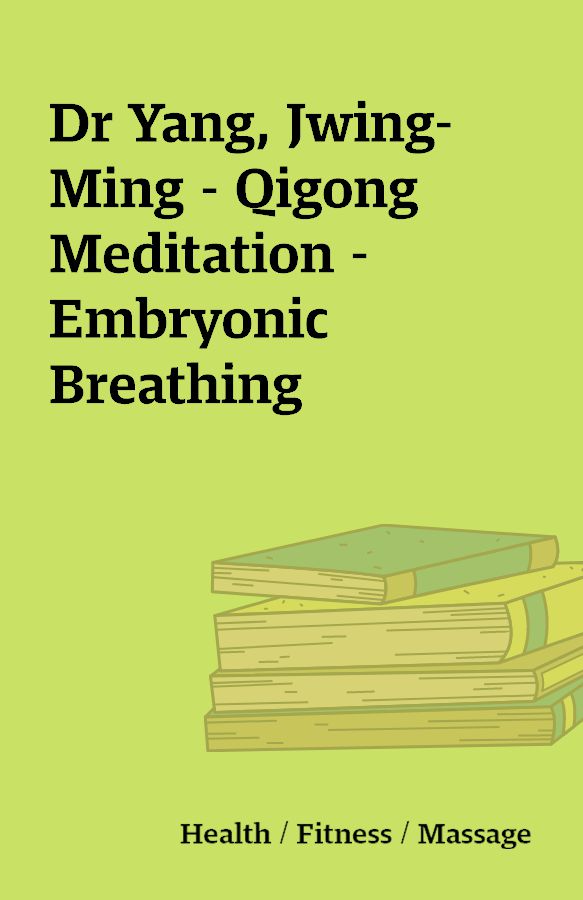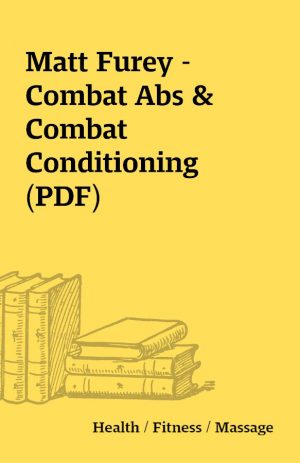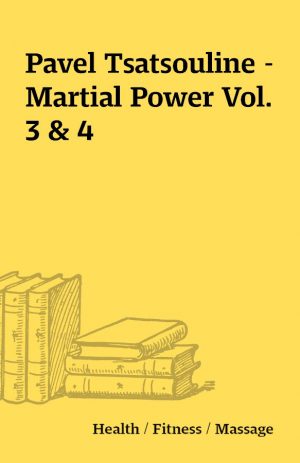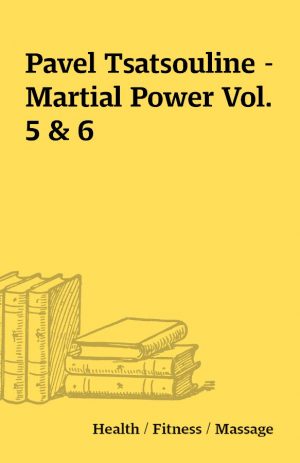Dr Yang, Jwing-Ming – Qigong Meditation – Embryonic Breathing
Dr Yang, Jwing-Ming – Qigong Meditation – Embryonic Breathing
[1 Scan – 408 JPG]
Description
This book presents the foundation theoretical theory for the two most popular methods of meditation, Small Circulation and Grand Circulation. # Paperback: 389 pages# Publisher: Ymaa Publication Center; Bilingual edition (October 1, 2003)# Language: English# ISBN-10: 1886969736# ISBN-13: 978-1886969735http://www.amazon.com/Qigong-Meditation-Embryonic-Yang-Jwing-Ming/dp/1886969736/Truly deep book about breathing and energy, January 9, 2007By Korpo (Bayern) – See all my reviewsThis review is from: Qigong Meditation: Embryonic Breathing (Paperback)I hesitated quite some time buying “Qigong Meditation – Embryonic Breathing”. I wondered whether it would be worth reading (and paying money for the privilege to do so). Everything I read _about_ it seemed generic and uninformative, but the book itself is marvellous, as I know now.I have read other reviews and came to the conclusion this book is not for everyone, some reviewers even cited sentences next to the key sentences and complained about it lacking detail. It does not. Some things are simply hard to convey and describe…Today, thanks to the publishing of a lot of books suggesting that you apply techniques early on that may have been esoteric, inner circle and hidden knowledge, a lot of people think that they are in the know. In fact, in terms of real written knowledge they may be. Small Circulation / Microcosmic Orbit meditation seems to be easy enough.The problem is that key techniques need some time to develop and need to be developed properly. Guiding Qi without being able to properly sense its whereabouts, concentration and impact may or may not benefit and may or may not do damage. Fact is, you simply may not know that you put “fire to the devil” when you practise incorrectly as you have no way to measure or determine your progress.So when you practise such techniques without actually being able to properly judge how well you are doing them, this book seems to contain bad advice and little help. In fact it is only tailored to a more advanced, perhaps early-intermediate reader that has mastered the early stages of the practise, how to begin to regulate body/posture, breath, emotion and mind to a certain degree, can keep concentration, and can sense movement and stagnation of Chi. Without this a lot of the stuff written herein seems theoretical or lacking detail.The realm you enter with the practise of Embryonic Breathing is the one of inner self-awareness, starting out from body awareness. It is a crucial skill, not developed easily, not a simple subject. Anyone interested to developing this before tackling this book should try a book like Bruce Frantzis’ “Opening the Energy Gates of Your Body” first. Yang’s book only gives you strong hints about it, but is focused on the theory, framework, context and practise of Embryonic Breathing – no surprise there.If you know the basic skills, this book delivers everything you need to know to go on. On which points/cavities/nodes to concentrate, how to locate those, with which techniques to manipulate them, and what end result to produce, and what this end result means in the overall context of longevity and enlightenment meditation and different Qigong schools.It is first book (I know about) that discusses something I wondered about in Qigong exercises – is the Lower Dantian at the navel on the Conception Vessel (the Qi reservoir running down from tongue root, frontal chest navel to Huiyin/Perineum), or is it located within the body’s center inside the lower abdomen. Qigong literature is very unspecific about this, and depending on context names one or the other as the Lower Dantian.Yang clarifies that the navel location is the “False Dantian”, which can store some but not much Qi, and helps store some in the real one at the center of gravity. He gives full anatomical and self-awareness instructions where to locate which and how they are most likely constructed anatomically in the body (the bio-battery concept of layers of conductors (muscles/tendons) and isolators (fat/fasciae) is introduced here for the lower abdomen). Yang’s discussion of bioelectricity and a possible working of the Qi / bioelectricity system in the body is well-written, most-interesting and intriguing.Yang introduces deeper knowledge about the inner layers and details of the Qi circuit, such as the Yang core in the center of the Sea of Yin (in the center of the Real Lower Dantian) and the Yin Spiritual Center (in the center of the brain / Upper Dantian, where important glands reside). He relates this knowledge back to the Taiji symbol and shows yet another way for it to symbolize an important concept.First you develop the ability to locate and feel the places mentioned, to concentrate and how to lead Qi, and the breathing techniques. Then you train the technique and practise it to achieve the given goal, for example storing ample Qi for a later step. And then you can advance to the next practise. Nothing is missing here. It’s just so that this book does not repeat all preliminary skills necessary, and I for one do not demand that from it. I prefer a book with depth such as this over one with breadth, since those are available in reasonable numbers to satisfy anyone.Breathing is of course discussed thoroughly, and how its different techniques should be trained and can be applied to achieving certain goals. Breathing becomes a tool and the way for achieving different stages of practise, a context lined out really well during the middle part of the book, with a lot of detail of a complete “religiously” Daoist / Buddhist meditation program for achieving enlightenment.A lot of books have been written about meditation and breathing, but this practise and its intricate placement within context and theory makes this book a treasure. If you read carefully you may have answered enough about your questions about breathing and Qi to be sure you are practising properly and be able to monitor your progress.These techniques may be the key tools for experienced meditators to put in the missing pieces into their practise, and for novice meditators to lay a sound foundation for their future practise. (Novices to sitting meditation maybe, but surely not to Qigong…)It is one of the few books that leaves you with the feeling that there is a roadmap for practise and you don’t have to stumble about in your search. It relies on many sources instead of citing a single master.One especially rare treasure is the section containing translations of selected Chinese texts about the topic. As Dr. Yang points out, one needs a strong understanding of the context of Qigong, of Chinese culture, Taoist philosophy and technical terms to be able to comprehend and translate without loss of meaning such original sources. Else the output could be flowery and incomprehensible poems obscuring the real content (possibly with intent) hidden within.I can truly recommend this book to everyone interested in deeper energy meditation practise and Nei Gong. You won’t regret, I’m sure. The writing can sometimes be redundant, dry and lengthy, but the knowledge is better given in a most detailed way instead of the most entertaining. Depending on your predisposition you may prefer Yang’s writing style over others, don’t take my or anyone other’s word for it. Please contribute back by OCRing *and* Spellchecking/Proofreading (!) this book. I recommend ABBYY Finereader 10 for doing this work in a relatively easy way. There are other applications as well. The important thing is to spellcheck and correct any mistakes the automatic software run did – often people just run automatic conversion and upload here a pdf that has many mistakes and/or can’t be converted to other digital formats. If you start to do the process please leave a comment here so the effort won’t be duplicated by others. Thank you.
You must be logged in to post a review.






Reviews
There are no reviews yet.